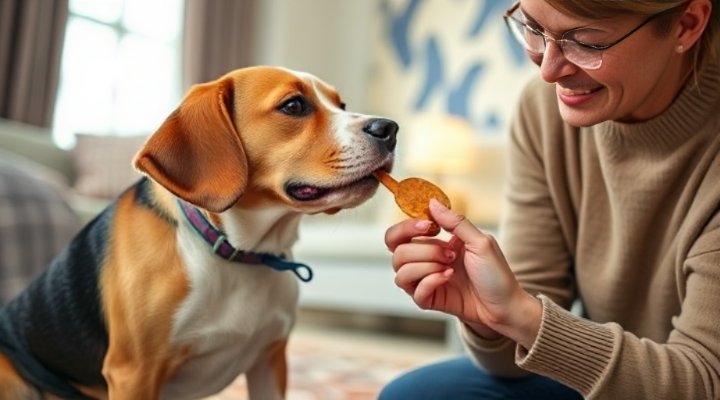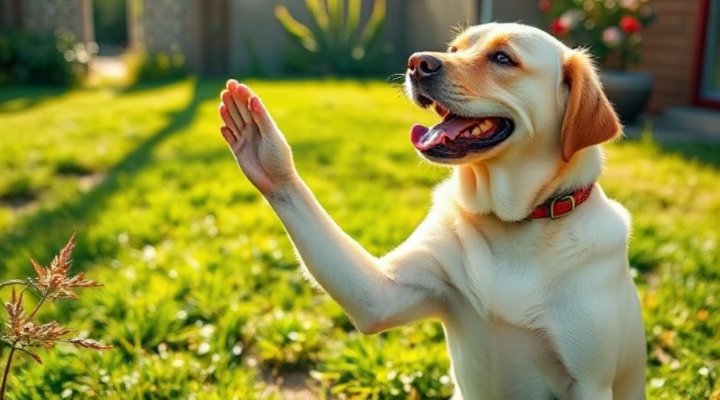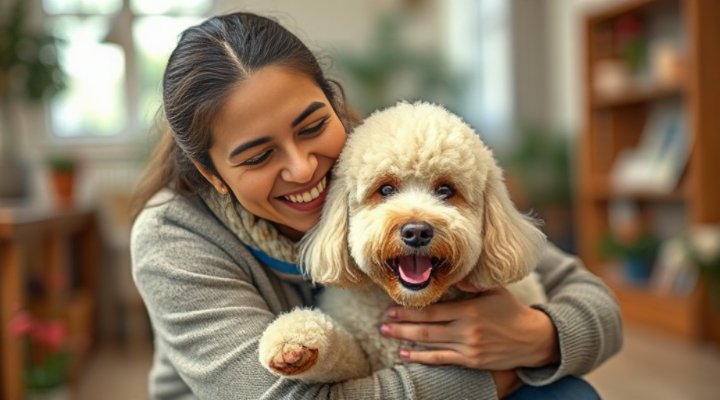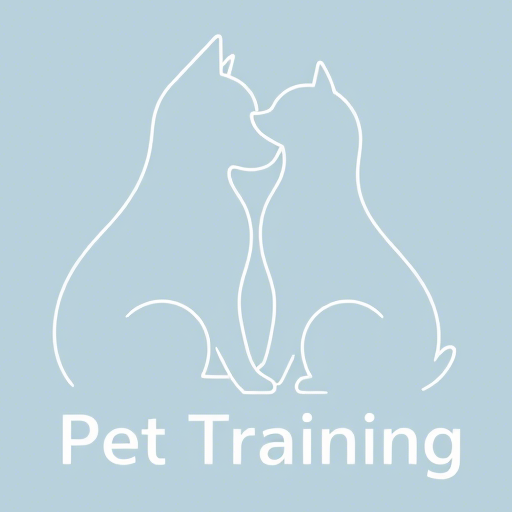Training a senior dog new tricks might sound challenging, but it’s a wonderful way to keep their mind sharp and strengthen your bond. In other words, it’s not about high-energy stunts; instead, it focuses on gentle, adapted methods that suit their age and health. For example, I once worked with my old Labrador, Max, who learned to ‘shake hands’ at age 12—it brought us both so much joy! Above all, the key is patience and using low-impact exercises to ensure their well-being. This guide will walk you through effective steps to teach your older canine companion new skills, making the process fun and rewarding for both of you.
Understanding How to Train a Senior Dog New Tricks with Age-Appropriate Methods
When you start training a senior dog, it’s crucial to consider their physical limitations. That is to say, older dogs may have arthritis, reduced vision, or lower energy levels. Consequently, avoid strenuous activities and opt for simple, low-impact tricks. For instance, instead of jumping, focus on commands like ‘sit’ or ‘stay’. Moreover, consult your vet to assess any health issues that could affect training. In the same vein, tools like non-slip mats can prevent injuries. By adapting your approach, you ensure that learning new tricks remains a positive experience.

Essential Steps for Training Senior Dogs New Tricks with Patience
Firstly, set realistic goals based on your dog’s abilities. For example, if your senior pup has joint pain, choose tricks that involve minimal movement. Secondly, use positive reinforcement—reward good behavior with treats or praise. I found that with Max, small, high-value treats kept him motivated without overfeeding. Further, keep sessions short, around 5-10 minutes, to prevent fatigue. Meanwhile, observe your dog’s body language; if they seem tired, take a break. Similarly, consistency is vital—practice daily but gently. This method not only teaches tricks but also boosts their confidence.
Using Low-Impact Exercises in How to Train a Senior Dog New Tricks
Low-impact exercises are perfect for senior dogs because they reduce strain on joints. For instance, teaching ‘spin’ slowly or ‘target touch’ (where they nose a object) can be fun and safe. Additionally, incorporate mental stimulation, like puzzle toys, to engage their brain. On the other hand, avoid tricks that require sudden movements. As a result, your dog learns without discomfort. To clarify, always warm up with light stretches if recommended by your vet. This approach aligns with the core idea of adapting training to maintain well-being.

Incorporating Health Considerations When Training Old Dogs New Skills
Health is a top priority when training senior dogs. Therefore, monitor their weight and diet to support energy levels. For example, if your dog has allergies, choose hypoallergenic treats. In addition, consider their dental health—soft treats might be better. But however, if you notice signs of pain, stop immediately and consult a professional. Meanwhile, resources like the American Veterinary Medical Association offer great advice on pet health. By prioritizing health, you make training safer and more enjoyable.
Positive Reinforcement Techniques for Gentle Dog Training
Positive reinforcement is highly effective for senior dogs. That is to say, reward desired behaviors immediately to reinforce learning. For instance, use clicker training or verbal praise to mark success. Moreover, keep the atmosphere calm and stress-free. I remember how Max responded better to gentle encouragement than to corrections. Consequently, this builds trust and makes the process enjoyable. In the same vein, avoid punishment, as it can cause anxiety in older dogs. This method ensures that training remains a bonding experience.

Practical Tips for How to Train a Senior Dog New Tricks Successfully
To succeed in training senior dogs, start with basics they might already know, then gradually introduce new tricks. Firstly, break down complex tricks into small steps. For example, for ‘roll over’, begin with ‘lie down’. Secondly, use hand signals if their hearing is impaired. Further, involve family members to maintain consistency. Meanwhile, track progress in a journal to stay motivated. Similarly, join a local class or online resource; for instance, our site has articles on advanced dog training techniques that can inspire you. Above all, celebrate small victories to keep spirits high.
Adapting Training Sessions for Senior Dog Needs
Adaptation is key when working with older dogs. So, adjust the training environment to be quiet and familiar. For instance, train in a room with few distractions. Additionally, vary the exercises to prevent boredom but keep intensity low. On the other hand, be flexible—if your dog isn’t in the mood, reschedule. As a result, you avoid frustration. To clarify, always end on a positive note, even if it’s just a simple ‘good dog’. This tailored approach supports their overall well-being.

Common Challenges and Solutions in Training Senior Dogs New Tricks
Challenges like stubbornness or slow learning are common in senior dogs. But however, don’t get discouraged—patience pays off. For example, if your dog resists, try a different reward or shorten the session. Consequently, you might discover what motivates them best. Moreover, health issues can hinder progress; in that case, focus on maintenance rather than new skills. Meanwhile, seek support from communities or professionals. Likewise, our guide on service dog training discusses adapting methods, which can be applied here. By addressing challenges proactively, you enhance the training experience.
Building a Bond Through Gentle Training Methods
Training isn’t just about tricks; it’s about strengthening your relationship. Therefore, spend quality time together during sessions. For instance, incorporate play and cuddles. In other words, make it a fun, shared activity. I found that with Max, our training times became our special moments. As a result, his trust in me grew. Similarly, use this time to monitor their health and mood. This bonding aspect is crucial for both emotional well-being and effective learning.

Conclusion: Embracing the Journey of How to Train a Senior Dog New Tricks
In conclusion, training a senior dog new tricks is a gentle, rewarding process that requires adaptation and patience. To sum up, focus on low-impact exercises, positive reinforcement, and health considerations. For example, start with simple commands and build slowly. Most importantly, enjoy the journey—it’s a chance to connect deeply with your furry friend. If you need more tips, check out resources like the American Kennel Club for expert advice. Remember, every small step counts, and with love and consistency, your senior dog can learn amazing new things.
Keywords: senior dog training, old dog tricks, gentle dog training, low-impact exercises for dogs, positive reinforcement for senior dogs, dog health and training, patience in dog training, how to train a senior dog new tricks.
